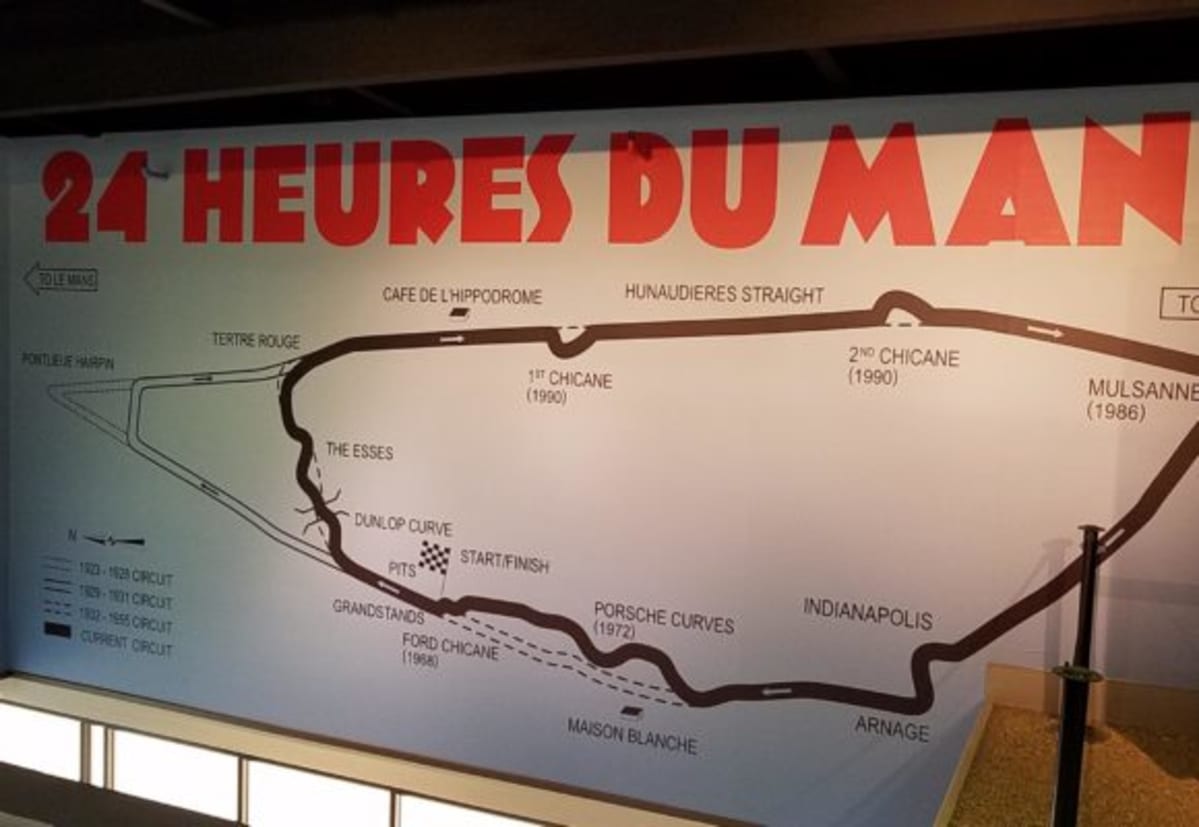Lady of Lake Maggiore
Published on Wed, Nov 6, 2019
By: The LACar Editorial Staff
LA Car is on hand to experience the debut of automotive and multimedia art at the Mullin Automotive Museum
Story and photos by Roseanne Murphy
“I make pictures out of pictures,” says Heidi Mraz about her profession. And while that description is accurate, it is a bit of an over simplification. Mraz is a multimedia visual narrative artist who specializes in creating intricate collages of significant automobiles which convey not only the image of the car, but the story behind the car at the same time while using bits and pieces of other pictures. From a distance, you see the image of the car, but as you get closer you see that all of the colors which make up the larger image are created from clippings of other images either taken by Mraz or from magazines or other memorabilia which give the image physical depth and meaning far beyond just the automobile itself.

Mraz’s latest work was recently unveiled at the world-renowned Mullin Automotive Museum in Oxnard, California. The Mullin is a privately owned museum with an impressive assemblage of French automobiles and art collected by philanthropist and car enthusiast, Peter W. Mullin. The only way to describe a visit to the Mullin is that it’s a sublime artistic automobile experience located in an unassuming business park in Ventura County.

Aside from a shared love of vintage automobiles and the art of provenance, Mullin and Mraz share a great interest in the famous 1925 Bugatti Type 22 Brescia Roadster recovered from Lake Maggiore, Italy. As the story goes, the Bugatti changed hands during a drunken poker game in which the original owner, Grand Prix driver René Dreyfus, lost the car to Swiss playboy Adalbert Bodé in Paris in 1934. But sadly, Bodé was not able to transport the car into Switzerland without paying taxes on the vehicle and had no cash on hand to cover the cost. Since the car at that time did not have significant value, Bodé abandoned it with the Swiss officials. The story goes that a chain was attached to the car and it was rolled down into Lake Maggiore. Some say they believe the chain was used because someone intended to later recover the car, but the chain broke. Whether intentional or not, the car was stuck, laying on its side in 175 feet of water for decades. And as the story faded into history, it became the stuff of local lore and legend, until a scuba diver one day dove to the bottom of the lake and confirmed the car’s existence in 1967.

The Bugatti was eventually recovered in 2009 by a local diving club whose intention was to use the sale of the vehicle to raise funds, awareness, and support the prevention of youth violence. The inspiration to recover the Bugatti came in 2008 when a local boy, Damiano Tamagni, was killed at a street fair in a brutal, random beating, and locals were seeking a way to create a legacy in his name. It took 16 divers to recover the car which was later auctioned and the proceeds were donated to a non-profit foundation established in Tamagni’s name. A crowd of thousands witnessed the long-sunk Type 22 emerge from Lake Maggiore on July 12, 2009. And as it emerged, what they saw was a car whose one side was largely decayed due to age and exposure to the water and whose other side was largely intact and preserved from having been submerged in mud at the bottom of a Swiss lake for 75 years. Sold at auction for $377,000, the Bugatti was purchased by Mullin.

And this is where Mullin and Mraz’s stories intersect. Mraz found the history of the Type 22 Brescia so compelling and the story of the local families and friends who so wanted to mark the life of a dear friend who was needlessly lost, that she decided to create a wonderful piece of art celebrating the car, the amazing story, and its provenance. “Every car has a story,” says Mraz. “I decided to take a journey and totally immerse myself in the life and lore surrounding the vehicle. And what I found along the way, is that sometimes a good story has the power to change people, especially if you look beneath the surface.” Her visual narrative captures the story so completely that you almost feel like you are seeing the car in its watery ascent and its re-emergence at the surface as a buoy of light and joy.
Today, that Type 22 Brescia Roadster can be seen at the Mullin Automotive Museum in nearly the exact condition it was in as it emerged from the lake –less some of the mud and water– in a most inventive backdrop which mirrors the feel of submersion, less some of the mud and water. And to come full circle, Mraz’s work can also be viewed at the Mullin Museum.
“I never knew 10 years ago that we would be here celebrating this today,” said Mraz at the unveiling of her multimedia collage on a canvas of water soluble ink and acrylics. Even the canvas paid a visit to the bottom of Lake Maggiore during its creation, being soaked in the lake water and then laid out to dry on the shore before becoming the mounting surface for the micro-story images which eventually form the shape and features of the famous Lady of Lake Maggiore Bugatti.
The Mullin Automotive Museum is open to the public by appointment only; reservations and scheduling are available at www.mullinautomotivemuseum.com. Information regarding Heidi Mraz and her amazing work, the art of provenance, can be found at www.heidimraz.com.











